Aquarium plant nymphea: types, planting and care
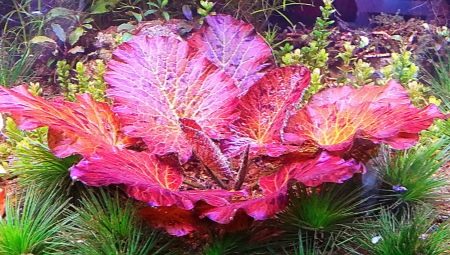
Aquarium water lilies - nymphs - have a more modest size when compared with their wild relatives. They began to be kept in artificial reservoirs not so long ago, but in order to achieve the appearance of flowers of magical beauty that float to the surface of the water, favorable conditions must be created for the plant.
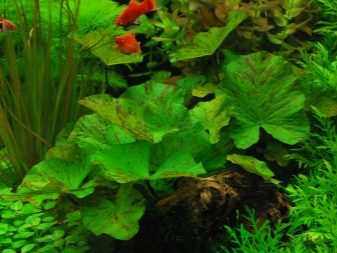
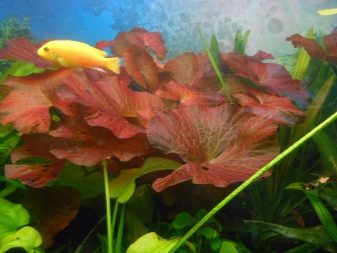
Description of the plant
The common aquarium plant nymphea (its other names are tiger water lily and lotus) is a real decoration of a home reservoir.
It is believed that it comes from subtropical lakes located in the western part of the African continent, but many also consider the plant to be a specially grown hybrid created for aquariums.
Description of appearance:
- the leaves of the water lily growing from the rosette of the stem can be round or resemble hearts, about 15-60 cm in diameter;
- the color of the leaves is light and dark green, red, burgundy, their surface is speckled with brownish, purple, purple spots;
- the plant has a powerful root system with thick shoots.
The nymph is thermophilic and needs an abundance of light; it blooms for a long time in mid-July. In a tiger water lily, flowers are white and pale pink.

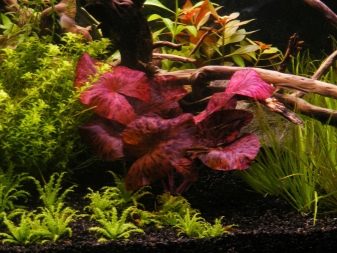
Aquarium forms can grow from 20 to 70 cm in height. Lotus is a rather capricious plant, so you can take up its cultivation if you have knowledge about the subtleties of caring for them and conditions of detention.
Types of water lilies
Several varieties of plants can be kept in an aquarium, among which the following stand out.
- Tiger green nymphea characterized by white flowers and large bright green leaves, decorated with dark ornaments.
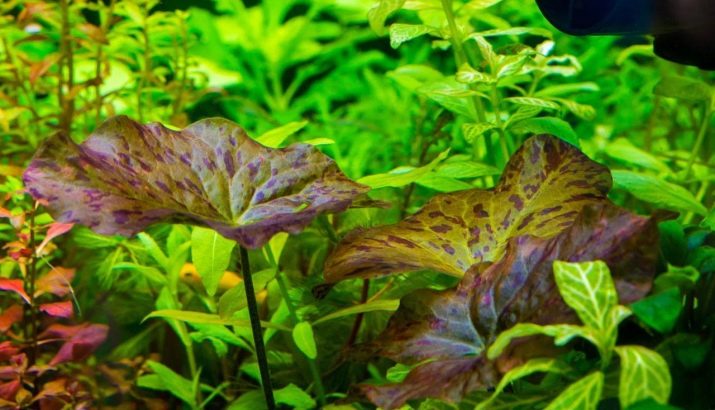
- Red water lily - a hybrid with leaves of red or dark yellowish-green color and deep carmine patterns.

- Rudge - nymphea with a rounded shape of leaves of a pinkish-green color, the flowers of the plant are white.
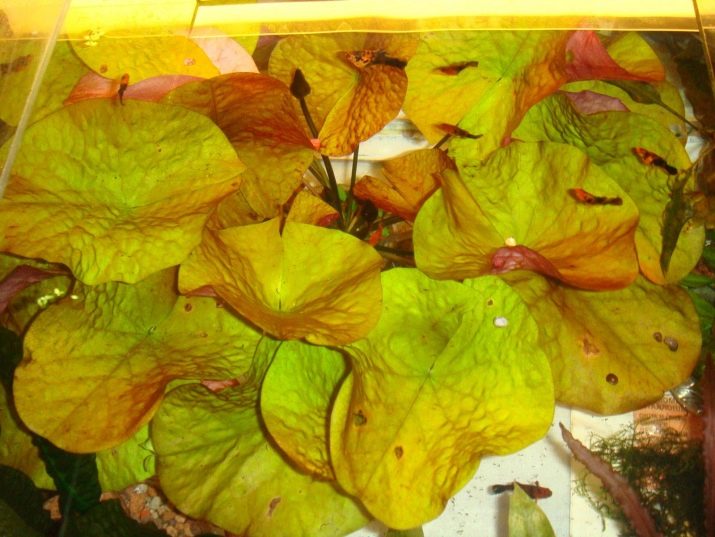
- Burgundy water lily, with a small height (no more than 40 cm), and chic leaves of deep red color.
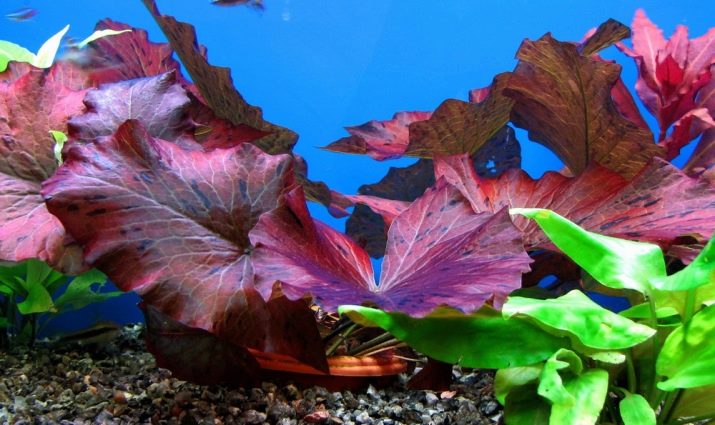
- A small plant of the micranta of the water lily family has the peculiarity of forming both underwater and above-water leaves, the height of the bush of this nymph is only 30 cm.
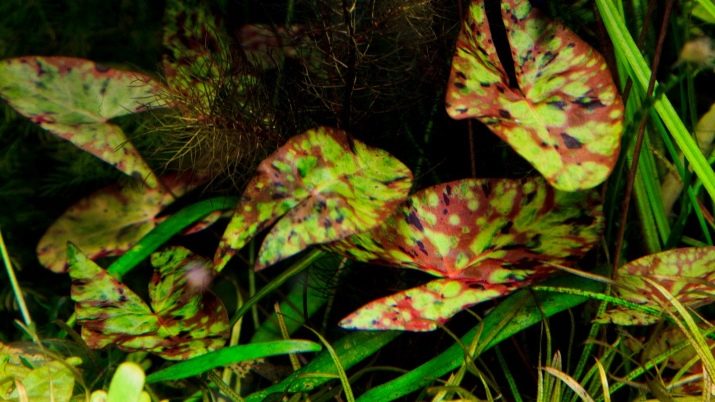
- Most unassuming to content - viviparous nymphea, she calmly tolerates changes in acidity and water hardness. On the outside of the leaves, emerald green predominates, their lower part is covered with burgundy and purple specks.

- Nymphaea Stellata - a beautiful plant, characterized by a variety of tones and shades on its unusual leaves, the nymphaea flower is quite large, 12-14 cm in diameter, but high-quality soil is needed for flowering.
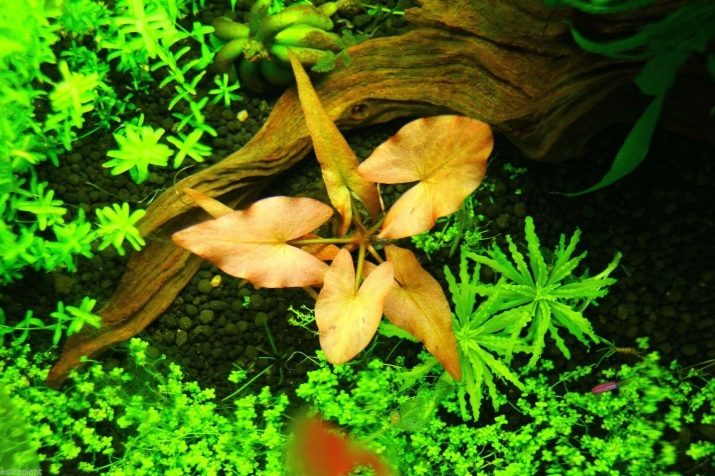
The cultivation of each water lily needs its own approach, in addition, you need to know that sometimes aquarium accessories are required to ensure flowering.
Content requirements
The aquarium water lily is a tropical plant, so it is easy to understand that it will need a lot of light. For this, additional lighting should be considered - special phytolamps used for crops growing in a greenhouse or greenhouse are suitable. However, you cannot install lighting devices close to the aquarium - nearby light and heat can cause burns on the leaves of the water beauty.
A necessary requirement for the growth, development and blooming of lotus flowers is warm water (25-30 degrees), as well as its sufficient volume. In this case, the tank must be capacious. The optimal height of the container is at least 40-50 cm, possibly more if a larger and taller plant is chosen for breeding.
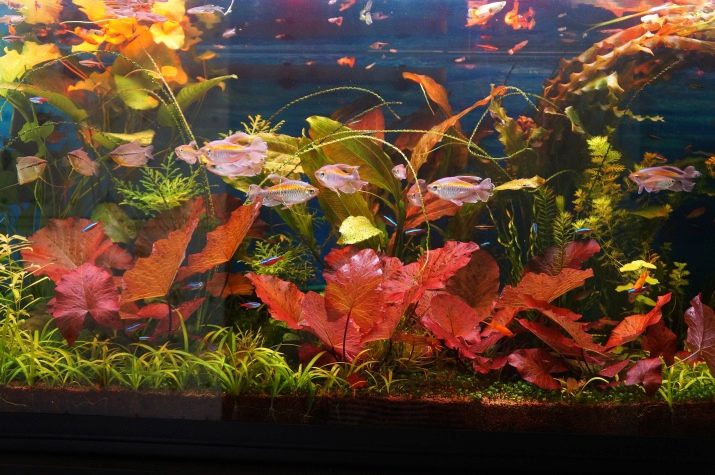
Nymphs prefer a mild and slightly acidic environment, which must be provided immediately upon planting.
And since the water lily loves standing water, it is undesirable to change it too often, it is best to do this 2 times a month and only 1/4 of the volume.
Lotus care includes creating a microclimate, this requires a compressor to oxygenate the water and a thermometer to regulate the temperature.
Sometimes a well-growing water lily slows down its growth and does not form flowers due to sudden changes in temperature.
It can also be due to too hard water. In such cases, the nymphea begins to build up a green mass, its bushes grow, and there are no flowers.
To speed up flowering, you can increase the artificial daylight hours for the moody lotus to 12-14 hours. However, a lot depends on the soil used and the planting process.
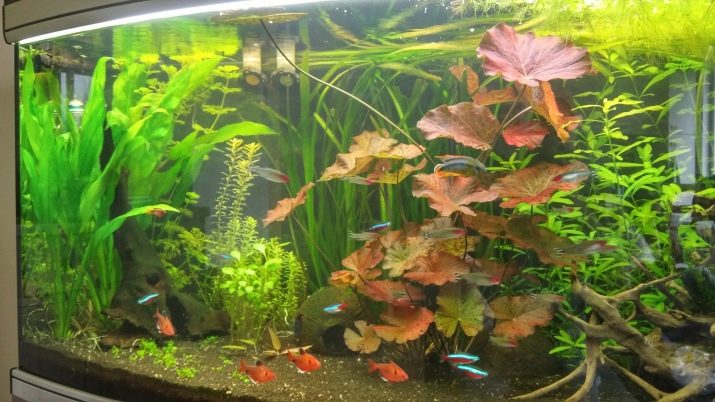
How to plant a nymphea
To plant water lilies in an aquarium, you need soil, the composition of which must be fertile enough. The substrate can be made independently from components such as black earth, peat, clay, small stones (gravel or pebbles). The height of the soil should be 4-7 cm.
Both common and dwarf lotus species are grown in earthen pots, but it is better to use higher quality ceramic utensils.
However, every year you will have to transplant the plant into a more spacious container, since the roots can grow strongly.
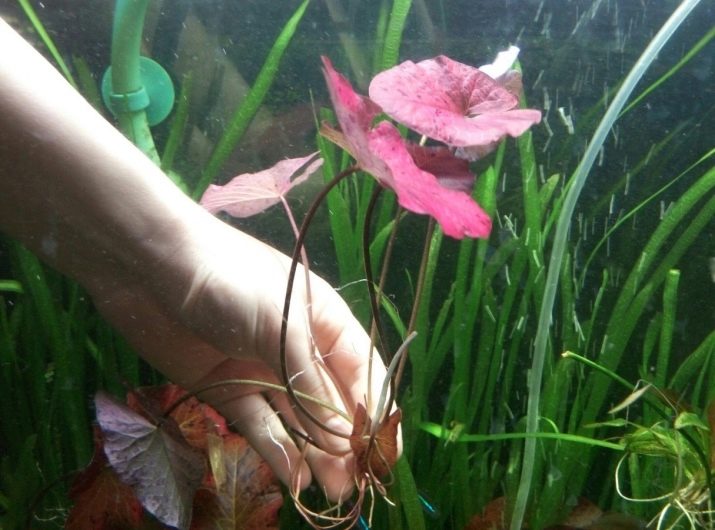
The plant can also be planted in the ground, but before that it is carefully compacted. Purchased rhizomes of water lilies are often used, and in order for them to germinate quickly, it is advisable to feed the plant. Bone meal is suitable for this, but it pollutes the water, so another method has been invented. The powder is rolled into balls with an admixture of clay, and then placed directly under the roots.
To prevent floating, a small amount of river pebbles are placed on top of the soil.Small pebbles and sand are also poured into the pots with the nymphea from above.

Breeding popular species
Viviparous and red dwarf water lilies at home can be propagated in two ways.
- The vegetative method is based on the use of rhizome shoots... But this requires the nymphea to complete flowering. Young branches, which have reached a length of 15-17 cm, are carefully separated and planted immediately. It usually takes time for them to adapt and start growing.
- It is much more difficult to propagate lotus by seed. You can get them by artificial pollination of flowers in the second half of August. The procedure is recommended to be carried out early in the morning. In this case, using a soft drawing brush, draw several times over the petals from their base to the stem. After that, seeds are formed, which are to be germinated.
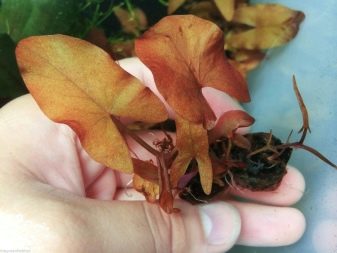
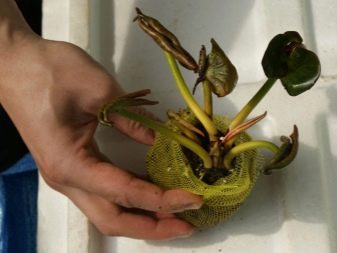
Seeds, as in the case of any seedlings, must be sown in containers with a peat substrate, watered with settled water, and when seedlings appear, transplanted into separate pots with soil from soil and sand.
The seedlings are fed with iron salts, humates, bone meal and mineral supplements intended for water lilies. Fortified seedlings with a developed rhizome can be planted using already known methods - into a ceramic container or directly into the ground.
If all the requirements for the maintenance and care of the nymphea are met, then a young plant planted in April develops rapidly and is able to bloom in July.
For the nymph, see below.








